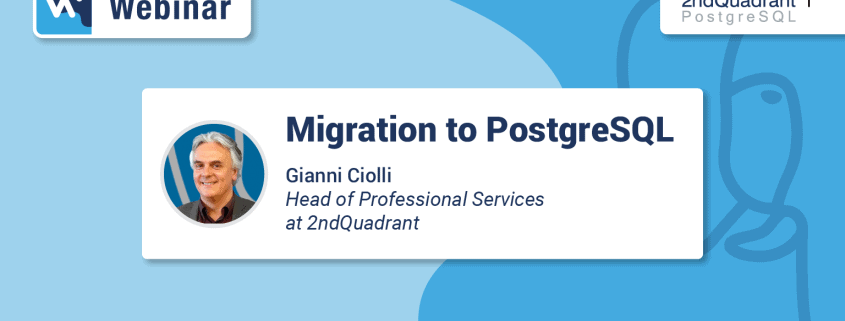Migration to PostgreSQL [Webinar]
Among the many reasons to Migrate to PostgreSQL, dedicated support and seamless transition are key drivers for a business considering migration. Being open-source software, PostgreSQL provides a highly reliable, stable, scalable, and secure database migration, keeping in mind the unique needs of every business.
Migration to PostgreSQL, however, can still be an extensive process as it requires planning, testing, knowledge to handle challenges, and much more.
As part of the ongoing PostgreSQL Webinar Series, 2ndQuadrant hosted a webinar on Migration to PostgreSQL, covering an extensive overview of PostgreSQL migrations, from planning to typical challenges encountered and post-migration tests.
You can now watch the full webinar, first held on 26 June, 2019.
Webinar: Migration to PostgreSQL by Gianni Ciolli
To stay updated on upcoming weekly webinars by 2ndQuadrant, you can visit our Webinars page.
For any questions, comments, or feedback, please visit our website or send an email to [email protected].







hi,
great video tutorial, thanks !
I will check the second video now 🙂
regards